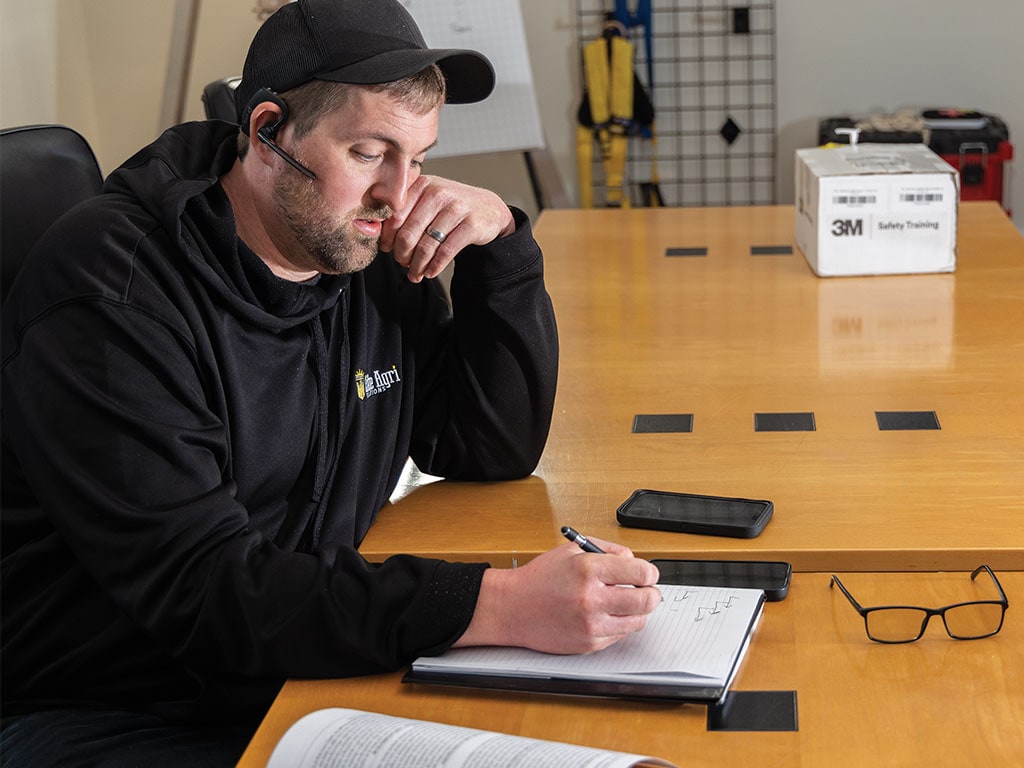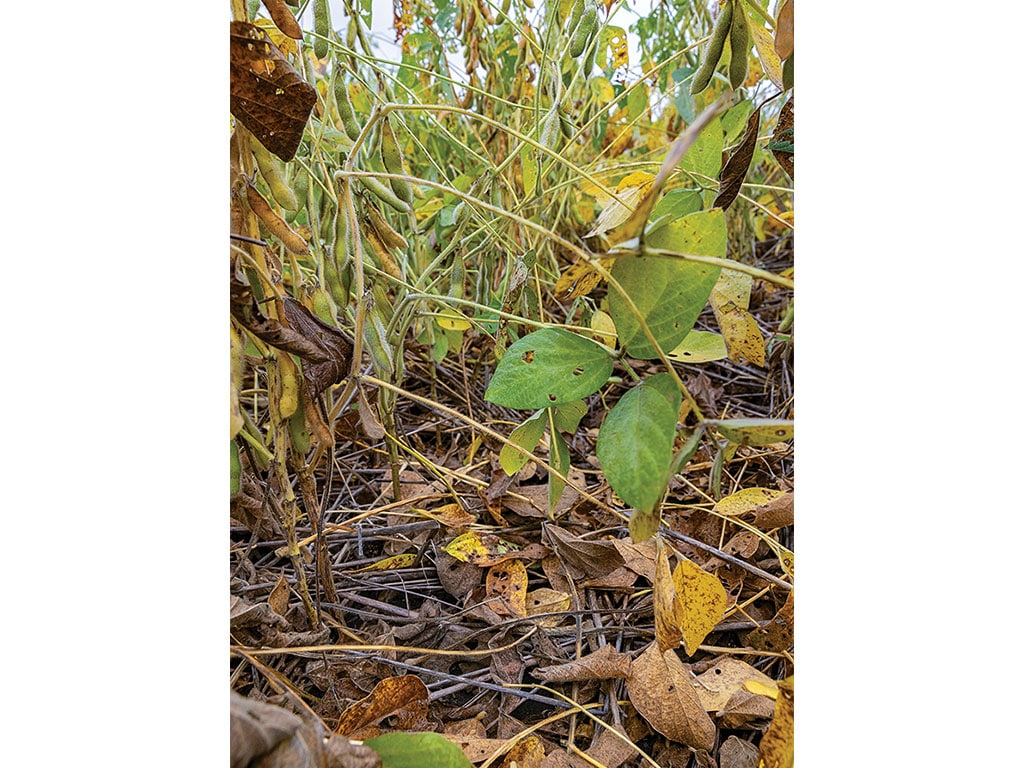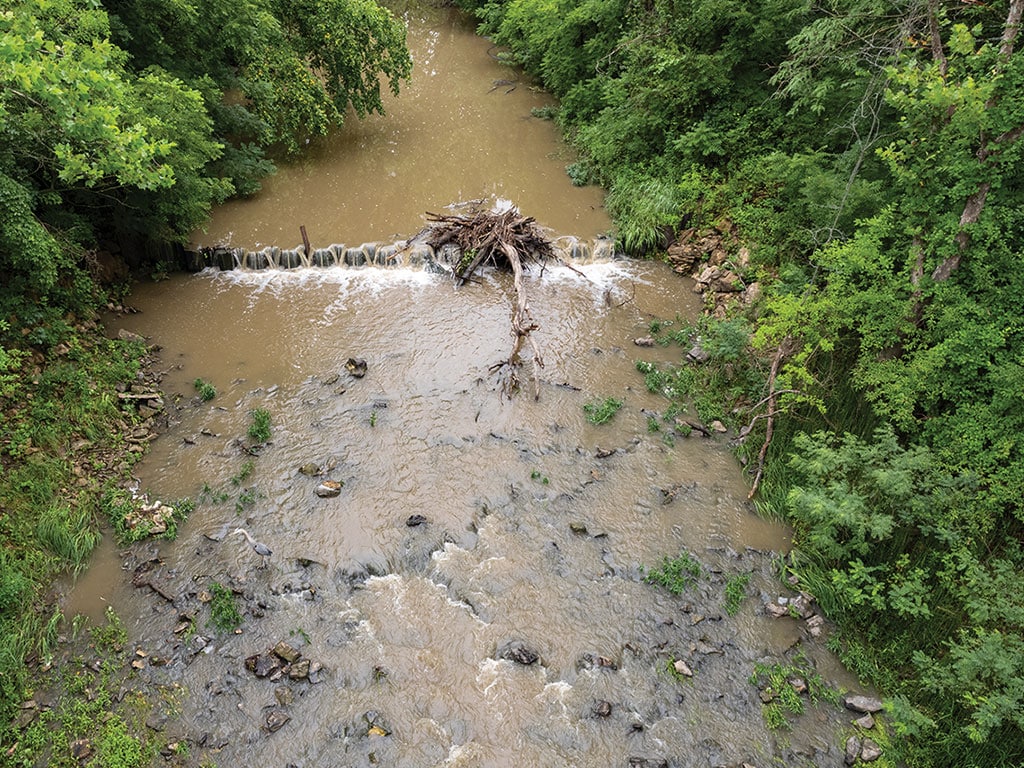Agriculture, Sustainability February 01, 2025
Rooted
Farmers can lead the way in preventing sedimentation.
by Bill Spiegel
4.63 tons per acre.
That's the average amount of soil lost to wind and water erosion each year on U.S. farmland, according to the USDA's Natural Resources Conservation Service. That lost soil costs farmers an average of $85.44 per acre due to productivity lost by productive topsoil.
The cost to remediate areas impacted by soil erosion adds an additional $28.48 per acre, according to economists at the University of Illinois.
Kansas taxpayers are paying for expensive lessons brought on by soil erosion. Reservoirs in that state built as a result of the Flood Control Act of 1950 have drastically diminished capacity, and the state recently spent more than $30 million to dredge part of John Redmond Reservoir in eastern Kansas. The 1,637-acre reservoir is built on the Neosho River and has a drainage area of some 3,000 miles.
One-third lost. John Redmond had an initial conservation storage capacity of 82,231 acre-feet when it was completed in 1964. By 1993, the reservoir capacity had decreased to 57,842 acre-feet due to the amount of sediment deposited into the reservoir. That's not a surprise; the Corps of Engineers knew when the flood control reservoirs were built that sedimentation would occur. But John Redmond also serves as a source of water for Kansas' only nuclear power plant; having enough storage capacity is critical for that plant, says Eugene Goff, Kansas Area Manager for the Tulsa District of the U.S. Army Corps of Engineers.
In 2015, the Corps began a water injection dredging project that removed 3 million cubic yards—or 1,900 acre-feet—of sediment from the reservoir, for a total project cost of $31.62 million. The project took four years of planning and required a host of environmental studies and permits. The dredging process took about one year to complete and bought three years of storage, says Matt Unruh, assistant director of the Kansas Water Office.
The John Redmond Dredging project was the first of its size for a Corps of Engineers reservoir and was intended to be a model for other reservoir dredging projects around the nation. The lessons learned? Dredging projects are expensive, time-consuming, and more often than not, a practice of last resort.
Officials with the Kansas Water Office believe stemming erosion upstream through streambank stabilization and watershed conservation efforts is a more effective practice. "From a state of Kansas standpoint, we recognize the need and value of that upstream work," Unruh says.
Above. Cereal rye planted after corn harvest helps prevent rain droplets from dislodging soil. Each year more than 4 tons of topsoil are lost to erosion, much of which washes into reservoirs and rivers.
Keep it in place. Growers in the John Redmond Reservoir watershed who adopt no-till, cover crops, permanent vegetation and filter/buffer strips are eligible for financial assistance, says Derek Haines, who is the region's watershed coordinator for the Kansas Alliance for Wetlands and Streams, a non-profit entity that works with the Kansas Water Office to help landowners improve water quality.
Emporia, Kansas, farmers Randal and Kevin Karr have used the KAWS cost-share programs on their no-till farm. They have adopted cover crops, including cereal rye after corn, diverse cover crops after wheat, and no-till alfalfa after wheat.
"The pursuit of lack of erosion on our farm is something that began with my grandparents," says Kevin Karr. "We farm upland soil and even with terraces and waterways we get erosion. If we don't have something covering our soil, we're losing it."
The challenge is to encourage more producers to adopt practices that reduce soil erosion, Haines says.
"It's a drop in the bucket, but if you catch enough drops in enough buckets it can make an incredible difference." ‡
Read More

AGRICULTURE, FARM OPERATION
Agrologist, Accountant, Grant writer?
Stop leaving millions on the table!

AGRICULTURE, SUSTAINABILITY
A Spectrum of Solutions
Water management techniques turn into profits.



